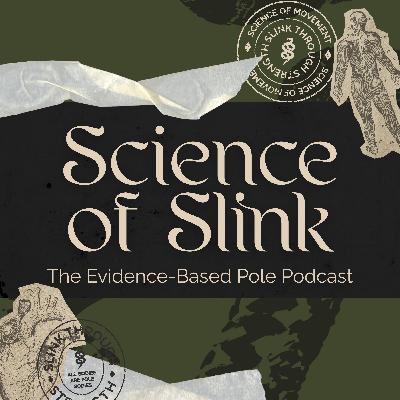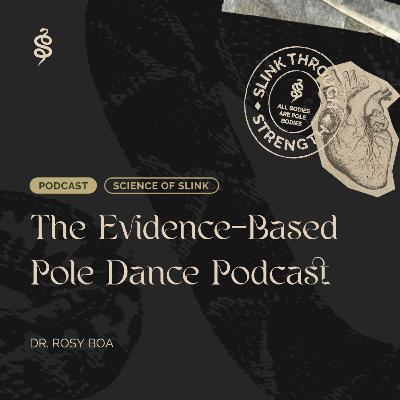Can Pole Dance Help You De-stress?: The Science Behind Exercise and Stress Reduction
Description
In this episode of 'Science of Slink,' host Dr. Rosy Boa explores the evidence-based research surrounding the question 'Can pole dance help you de-stress?' Dr. Boa reviews various studies on how exercise, particularly aerobic activities like freestyle pole dancing, interact with the body’s stress systems to reduce stress. Topics include the physiological mechanisms like the HPA axis, recommendations for effective exercise regimens, and the benefits of integrating creative elements and deep breathing. Rosy also highlights the challenges of staying active when stressed and provides practical tips for incorporating stress-relieving activities into your routine.
Citations Mentioned:
Mastorakos, G., Pavlatou, M., Diamanti-Kandarakis, E., & Chrousos, G. P. (2005). Exercise and the stress system. Hormones (Athens), 4(2), 73-89.
Breus, M. J., & O'Connor, P. J. (1998). Exercise-induced anxiolysis: a test of the" time out" hypothesis in high anxious females. Medicine and science in sports and exercise, 30(7), 1107-1112.
King, A. C., Baumann, K., O'Sullivan, P., Wilcox, S., & Castro, C. (2002). Effects of moderate-intensity exercise on physiological, behavioral, and emotional responses to family caregiving: a randomized controlled trial. The Journals of Gerontology Series A: Biological Sciences and Medical Sciences, 57(1), M26-M36.
Spalding, T. W., Lyon, L. A., Steel, D. H., & Hatfield, B. D. (2004). Aerobic exercise training and cardiovascular reactivity to psychological stress in sedentary young normotensive men and women. Psychophysiology, 41(4), 552-562.
Stults-Kolehmainen, M. A., & Sinha, R. (2014). The effects of stress on physical activity and exercise. Sports medicine, 44, 81-121.
Martin, L., Oepen, R., Bauer, K., Nottensteiner, A., Mergheim, K., Gruber, H., & Koch, S. C. (2018). Creative arts interventions for stress management and prevention—a systematic review. Behavioral Sciences, 8(2), 28.
Zaccaro, A., Piarulli, A., Laurino, M., Garbella, E., Menicucci, D., Neri, B., & Gemignani, A. (2018). How breath-control can change your life: a systematic review on psycho-physiological correlates of slow breathing. Frontiers in human neuroscience, 12, 353.
Chapters:
00:00 Introduction to the Science of Slink
00:32 The Stress-Relieving Power of Pole Dancing
01:11 Real-Life Experiences and Observations
05:25 Understanding the Science Behind Stress and Exercise
08:31 Effective Exercise Strategies for Stress Reduction
15:56 Incorporating Creativity and Deep Breathing
21:22 Final Thoughts and Encouragement






